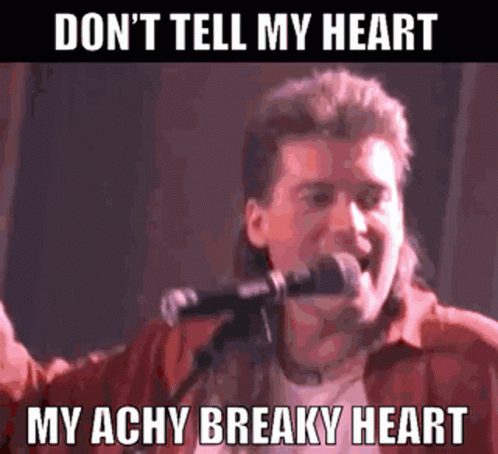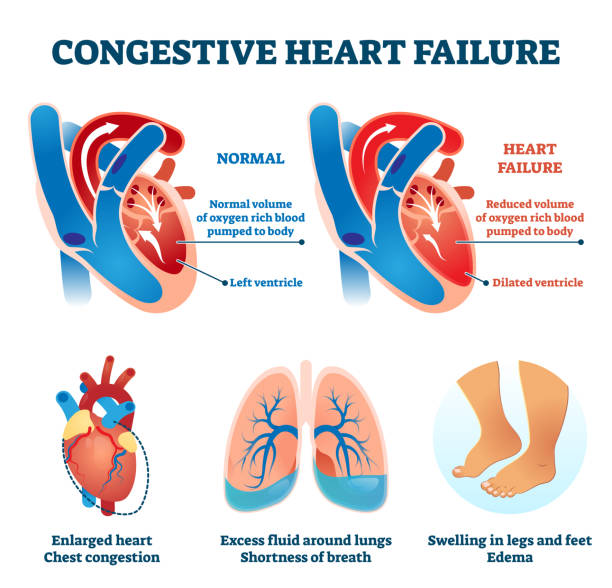
The medical term that perhaps best describes the term “broken heart” is congestive heart failure or CHF. At issue in CHF is the pump function of the heart, which cannot supply enough blood to meet tissue demands for oxygen. Fundamentally, this makes CHF a supply and demand problem.
The word “congestive” refers to the backup of blood in lungs, liver, abdomen, and lower extremities. Congestion leads to edema or fluid buildup.
The type of symptoms depend on which side of the heart is involved. If it is the right side, fluid builds up most often in the legs, but also sometimes in the genital area, liver, or the abdomen. If it is the left side, fluid builds up in the lungs. This causes shortness of breath, trouble breathing or coughing especially during exercise or when lying flat. Left-sided heart failure is the most common. If it is both sides, the same signs and symptoms from left-sided and right-sided heart are present. See image below.

The most common causes of heart failure are coronary artery disease, a heart attack, and high blood pressure. The current CHF treatment arsenal includes digitalis, angiotensin‐converting enzyme (ACE) inhibitors, beta‐blockers, and diuretics. Depending on the severity of the heart failure, and the risk for sudden cardiac death, placement of a pacemaker and/or an implantable cardioverter-defibrillator (ICD) to shock the heart and reset its rhythm is potentially indicated.
Regardless of the cause of the heart failure, evidence points to inflammation as a central player. Studies suggest that inhibition of the NLRP3 inflammasome, which reduces inflammatory responses, prevents the progression of heart failure.
The lead EpicentRx small molecule, RRx-001, is an NLRP3 inflammasome inhibitor as well as a nitric oxide (NO) donor only under low oxygen or hypoxic conditions. As we discuss in two previous blogs entitled “We ❤️ RRx-001 (Nibrozetone)” and “NO Puns”, nitric oxide is a cardioprotective agent.
These mechanisms underlie accumulating preclinical evidence that RRx-001 (nibrozetone) protects against the onset and progression of cardiovascular disease including right-sided congestive heart failure.
Or as CHF is sometimes also referred to, achy breaky heart.
